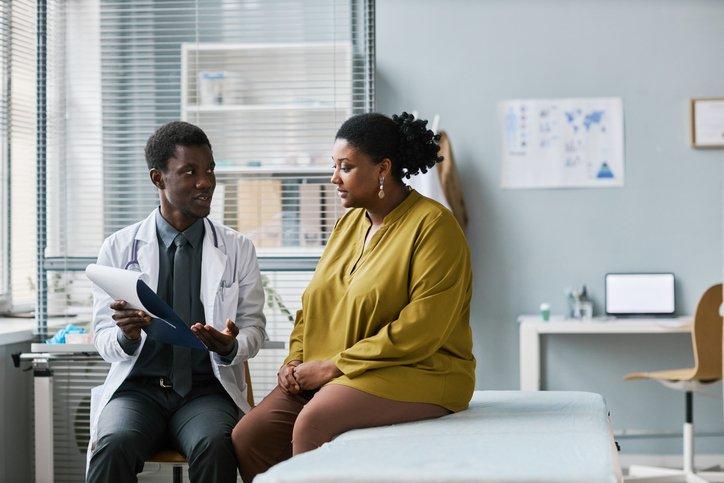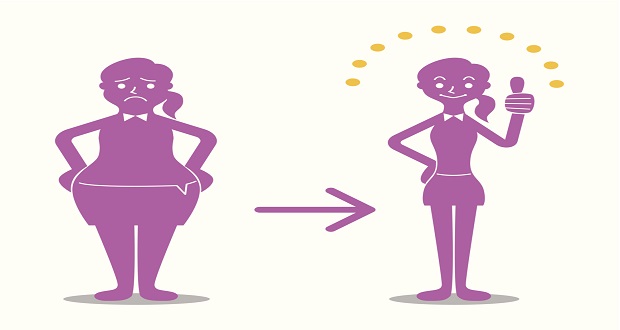
In a recent episode of Married to Medicine, one of the new cast members learns that she has symptoms of endometriosis. Since she is trying to conceive, the news comes as a shock, and I found myself triggered once again. See, if you watch reality television that follows the lives of women, especially Black women, you have heard this story often:
A cast member is interested in getting pregnant, goes to the doctor, and finds out she has fibroids, endometriosis, or some other reproductive health issue, such as polycystic ovarian syndrome (PCOS). Many times, they are forced to undergo surgeries, while sometimes they find other solutions, such as using a surrogate or self-care.
As a woman who has been diagnosed with endometriosis and endured multiple surgeries for fibroids and cysts, I understand how physically and emotionally painful these diagnoses can be. I had my first surgery in 2016, after going to the emergency room in debilitating pain. The doctors found a teratoma, or a large cyst, which had consumed my entire left ovary. Two surgeries later, I was diagnosed with endometriosis. It’s been a long and winding road, filled with appointments, pain management strategies, and disappointments. And as a reality TV fan, I am never able to avoid the topic.
On Married to Medicine, newlywed Lateasha Lunceford (aka Sweet Tea) is brought to tears after she learns that her chances of getting pregnant are going to be impacted by endometriosis. On the last season of the Real Housewives of Atlanta, we watched as cast member Shereé Whitfield tried to alleviate stress that was causing her painful fibroids, as opposed to getting surgery. In previous seasons, we know that other RHOA cast mates Porsha Williams and Kandi Burruss have dealt with similar situations. And on My Big Fat Fabulous Life, Whitney Way Thore talks openly about her PCOS and how it has impacted her weight, hair, skin, and fertility. In related stories, several women on reality TV have recently received breast cancer diagnoses and treatments as well.
As a viewer, I have watched and even cried with these women, as our journeys were so closely linked: receiving the news, researching what these big words mean, spiraling about what we find on the internet, and telling my partners. I have also been incredibly proud of these women because in years past, these were not conversations we were willing or able to have in public. I recall hearing the phrase “women’s issues” from our church pulpit. The way it was framed made it seem like these women failed to do something; they needed to pray more, eat better, or exercise the illness away. As a child, these ailments also sounded mysterious and far away, and certainly like something I would never have to deal with.
As an adult, I learned that not just a few, but many of my friends and colleagues were also (often silently) dealing with these same issues. So many of us suffered in isolation and shame, thinking that the burden was ours alone, when in fact, these conditions are quite common. Endometriosis and PCOS both impact about 1 in 10 women, and up to 80 percent of women develop fibroids and cysts. Women of color are more likely to be impacted by fibroids and PCOS, and less likely to receive a correct diagnosis of endometriosis. And while these conditions are not generally life-threatening, they are associated with heavy and prolonged periods, excruciating pain, and infertility. This also means that Black women are forced to miss work days, spend money on treatments, and deal with the indignities of health care systems often intent on not helping them. This is to say nothing of the dangers Black women face when they actually do get pregnant.
I appreciate not only that we’re seeing these stories, but how they have been handled. The tone of these scenes is informative, tender, and obviously filled with emotion. Sometimes we are able to see the conversations the women have with their families as well. As difficult as they are to watch, I find myself fully engaged. I am able to see myself in these stories, and root for the women to find their joy, peace, and healing, despite difficult circumstances. I love seeing the women’s partners support them as they adjust to new normals and seek out care options. Having had a lack of support in the past, it is important for me to see what a supportive partner looks like. I also appreciate the solidarity cast members demonstrate, setting aside their differences to rally around the impacted women, many of them having dealt with their own diagnoses.
For all the flack that reality television receives, I am not giving up on it. I see the value in sisterhood, in managing conflict, and in watching people navigate the ups and downs of life. Seeing women on television, whose homes we are in each week, share their stories of pain, disappointment, and healing has been both triggering and cathartic. While I don’t want to relive some of these moments, I am comforted by the fact that by these stories being made public, some women will get their diagnoses earlier, some will no longer feel alone, and that we will know that there is joy and hope after a difficult diagnosis. While there are still no cures for fibroids, PCOS, or endometriosis, the fact that we are having the conversations publicly gives me hope that research will get funded and that partners and families will be more understanding with the people managing these illnesses and corresponding symptoms. I know these are not easy or enjoyable conversations to have, but I am glad to see that we are still willing to watch, talk, and ask, because it matters.


















